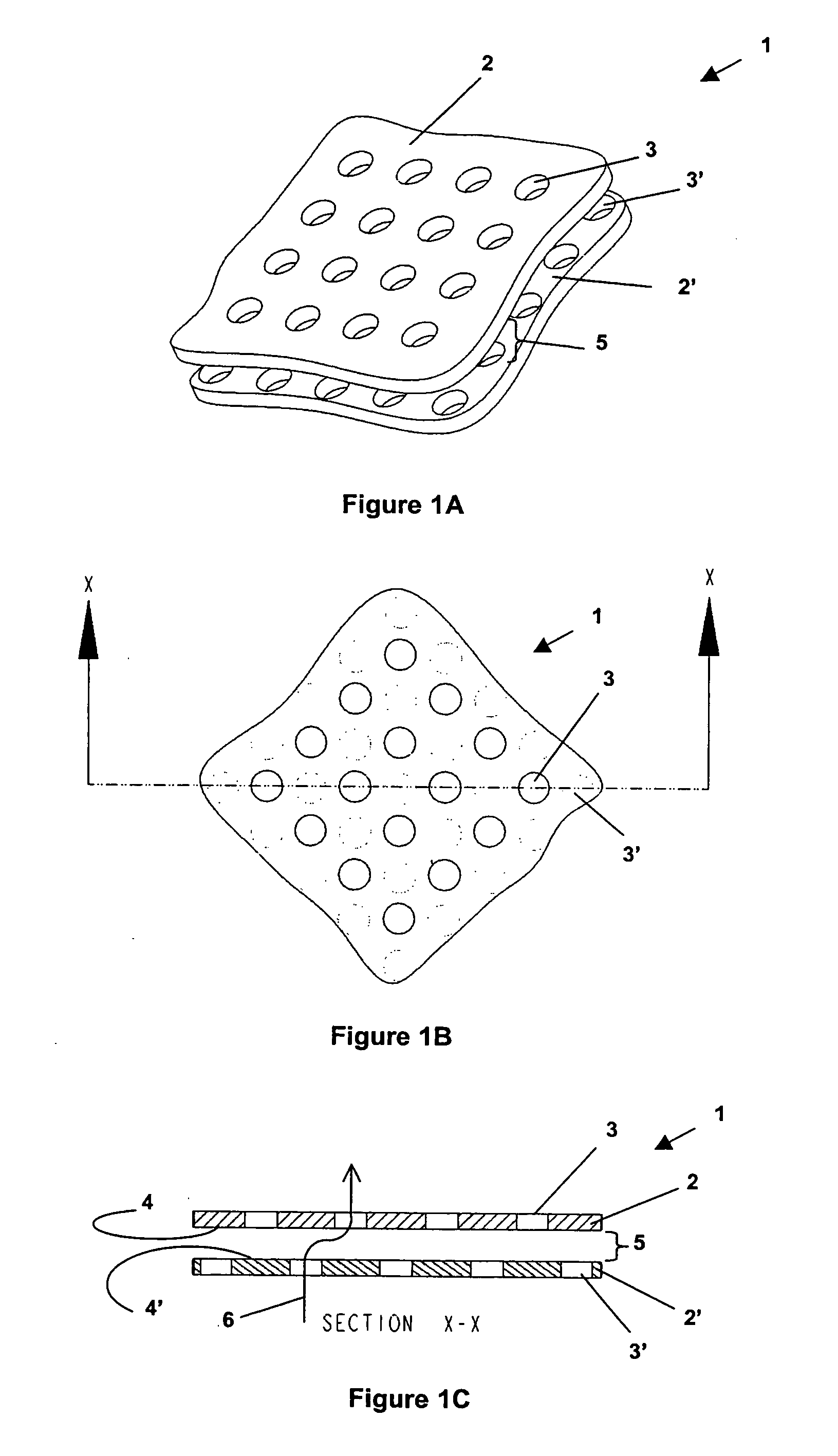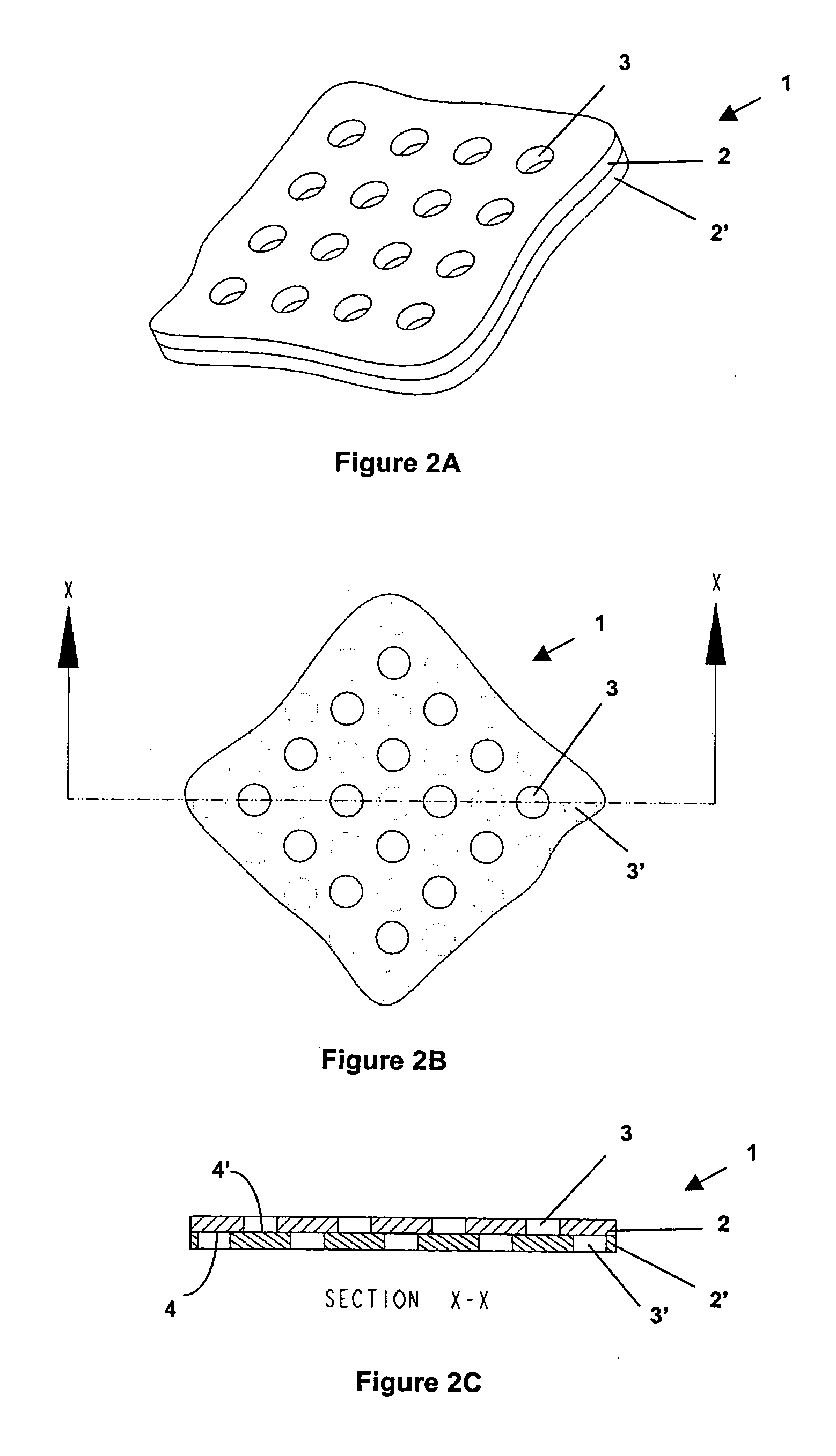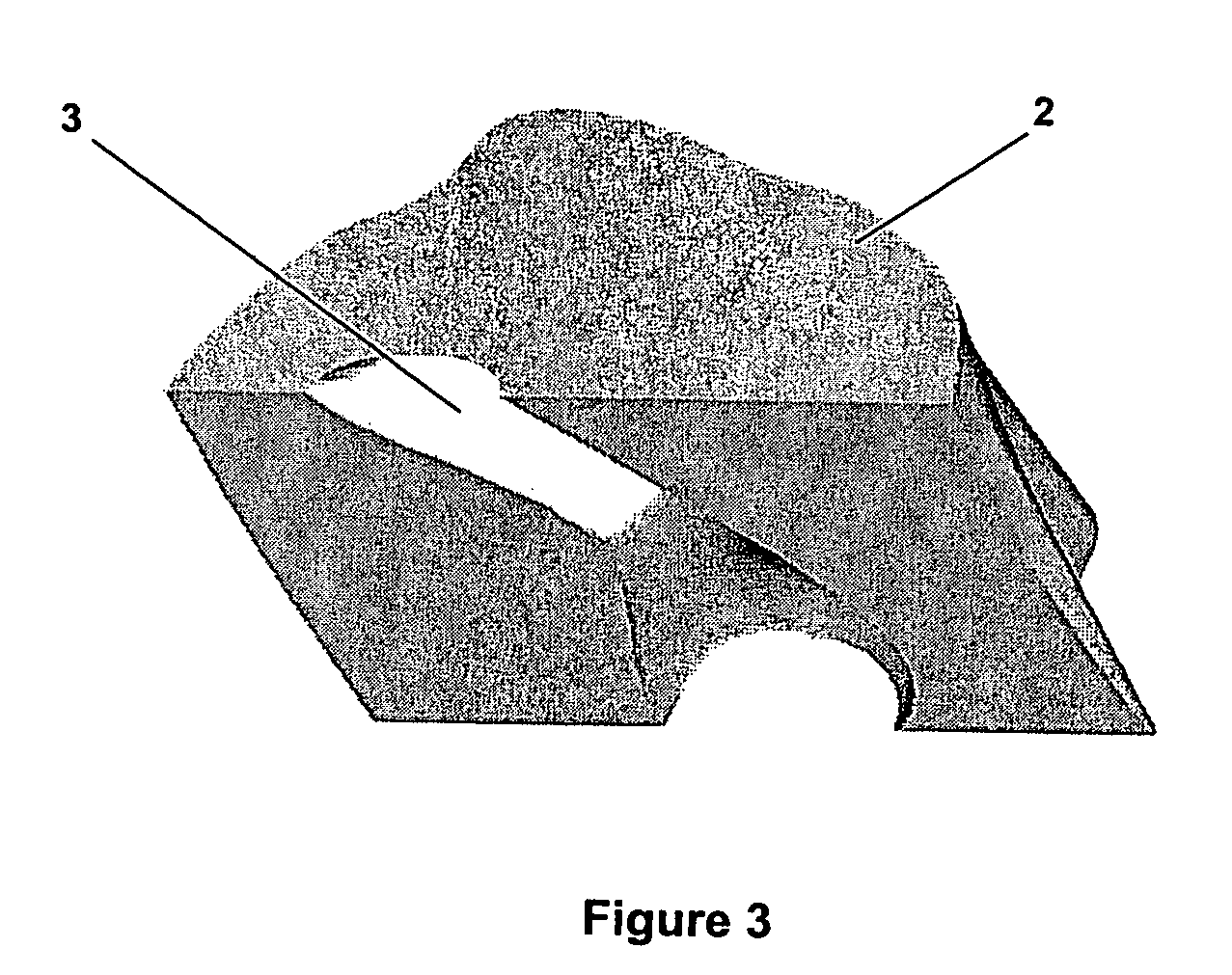Adaptive membrane structure
- Summary
- Abstract
- Description
- Claims
- Application Information
AI Technical Summary
Benefits of technology
Problems solved by technology
Method used
Image
Examples
example 1
[0122] This example describes an apparatus and method for testing and demonstrating the performance of the adaptive membrane structures of the invention. The multiple states of permeability of the structures are demonstrated by measuring the ratio of the oxygen permeability in the unactuated state and the actuated state.
[0123] Oxygen (O2) permeability of an adaptive membrane structure is tested in a gas permeability cell, a schematic of which is shown in FIGS. 17A and 17B. This system may be used to test any of the embodiments of the invention described above. For this example, an adaptive membrane structure of the general type shown in FIG. 13 is depicted comprising two substrate membranes 2 and 2′ each modified with an array of holes per the invention and with conductive coatings 7 and 7′ and spacer material 12. The membrane assembly is clamped between two cylindrical, clear acrylic pieces 13 and 13′ as shown in FIGS. 17A and 17B. The length of each cylindrical piece is 1″ and it...
example 2
[0130] Polyethylene terephthalate film, referred to herein as polyester film, sold under the trade name of Melinex® by DuPont Teijin Films, having a thickness of 196 gauge (0.00196″), is coated on one side with a thin layer of aluminum using a chemical vapor deposition process. The electrical resistance of a 2.5″ long by 2″ wide piece of aluminum-coated polyester film is measured using a two point probe apparatus. The resistance of the film is approximately 4 Ohms. The surface of the film that includes the aluminum coating will be referred to as the conductive surface while the other surface that does not have the aluminum coating will be referred to as the non-conductive surface. Two circular (4″ in diameter) pieces of this polyester film are converted to a pair of membranes following the invention by punching holes through the polymer film and the conductive coating thereof. The diameter of the holes is 0.04″. Holes are punched using a VIPROS 345 turret punching machine manufactur...
example 3
[0138] A pair of membranes is prepared from the same polyester film with conductive coating that is used for membranes in Example 2. The size of the holes, the hole pattern and the hole spacing in the membrane pair of this example are the same as those in the membrane pair of Example 2. The only difference between the membrane pairs of this example and the membrane pair of Example 2 is that the holes in the membrane pair of this example are created by laser drilling using a Lambda Physik (Göttingen, Germany) excimer laser Model LPX 220I operating at a wavelength of 193 nm.
[0139] An adaptive membrane structure is created by sandwiching one polyester spacer ring, 0.004″ in thickness as described in the previous example, between the two membranes. Note that the hole pattern in the two membranes is offset from each other, and when the membranes are assembled, the holes in one membrane are thus out of registration with the holes of the other membrane. Also, when the membranes are stacke...
PUM
| Property | Measurement | Unit |
|---|---|---|
| Temperature | aaaaa | aaaaa |
| Force | aaaaa | aaaaa |
| Electrical conductivity | aaaaa | aaaaa |
Abstract
Description
Claims
Application Information
 Login to View More
Login to View More - R&D
- Intellectual Property
- Life Sciences
- Materials
- Tech Scout
- Unparalleled Data Quality
- Higher Quality Content
- 60% Fewer Hallucinations
Browse by: Latest US Patents, China's latest patents, Technical Efficacy Thesaurus, Application Domain, Technology Topic, Popular Technical Reports.
© 2025 PatSnap. All rights reserved.Legal|Privacy policy|Modern Slavery Act Transparency Statement|Sitemap|About US| Contact US: help@patsnap.com



